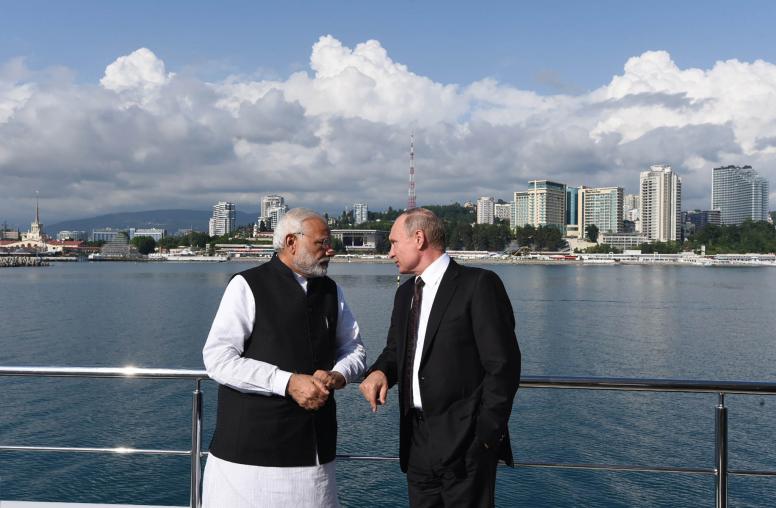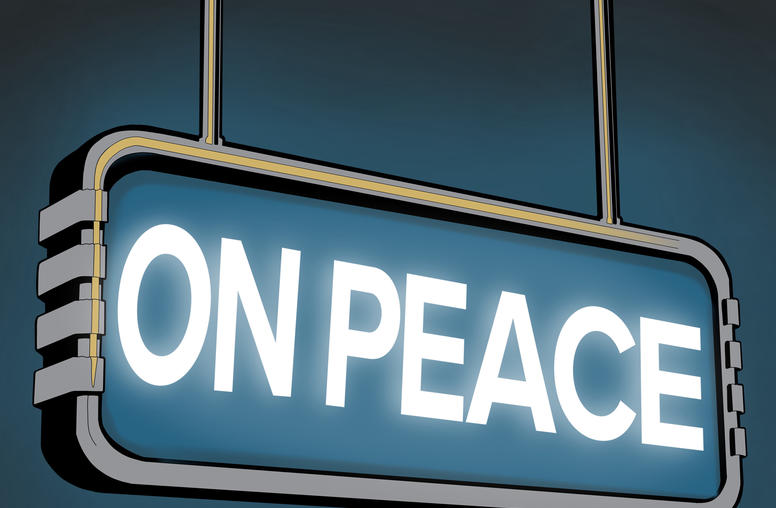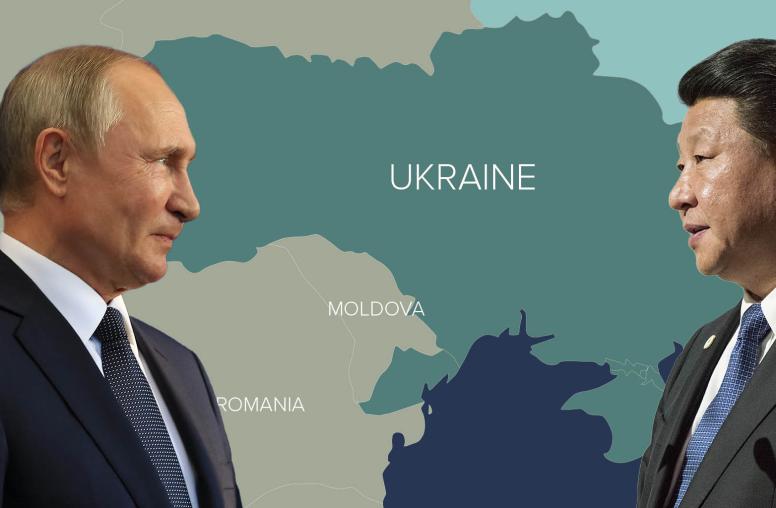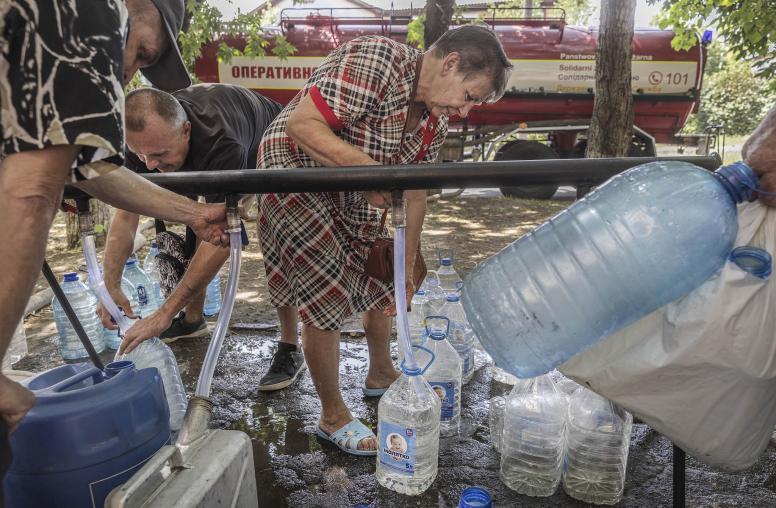How Territorial Issues Could Impact Security Guarantees to Ukraine
States must carefully weigh the risks of agreeing to provide security without knowing exactly what territory such guarantees would cover.
In late March, the Ukrainian delegation to the Russia-Ukraine peace negotiations in Istanbul put forward a draft peace agreement. The keystone of this agreement was a mutual defense guarantee, similar to NATO’s Article 5, to protect Ukraine. Treaty-bound guarantors would come to Ukraine’s defense in the event of an attack on the country, in exchange for Ukraine’s neutrality. But it is possible that Ukraine’s borders will be altered as part of a final peace settlement. As such, states should understand the territorial issues at stake and how those issues could trigger any negotiated security guarantee mechanisms.

External guarantors, according to the Ukrainian delegation’s lead negotiator, would hold consultations “within three days after the start of the war, aggression, military operation, any disguised, hybrid war against Ukraine.” They would then be “legally obliged to provide military assistance” to Ukraine “in the form of armaments and the closure of the skies.” The proposal identified the United States, Great Britain, France, China, Russia, Turkey, Germany, Canada, Italy, Poland and Israel as possible guarantors, leaving open the possibility that other states could be added. The Ukrainian government is negotiating with these potential guarantors bilaterally.
A final peace agreement would be subject to a national referendum in Ukraine, while would-be guarantors would require approval from their national parliaments to grant Ukraine security guarantees. In the early period of negotiations, the Ukrainian and Russian positions on some of the major issues at stake were far apart. Since then, negotiations have all but stalled, and may remain so given reports of Russian atrocities against civilians. Although the possibility of reaching a final agreement remains distant and uncertain, territorial issues will present a complex problem for potential guarantors moving forward.
Territorial Issues in Flux
Before agreeing to provide these guarantees, potential external guarantors would need to clearly understand the territorial limits to which they would extend. Three major territorial issues are at stake in the negotiations:
- The status of Crimea;
- Territory claimed by the two so-called “people’s republics” in Ukraine’s Donetsk and Luhansk regions (DNR and LNR, respectively); and
- The fluctuating Russian control of territory in Ukraine’s north, east and south since its February 24 invasion.
Currently, Russia is focusing its efforts in the south along the Black Sea and in east in the Donbas while slowing its operational tempo slightly in the north, but conditions on the battlefield change regularly.
The Ukrainian delegation has provided some insight into their thinking on the first two issues. Concerning Crimea, the proposal includes a 15-year, Russia-Ukraine negotiation process on its status, which stipulates that neither side will resort to the use of force to change the status quo during that period. The status of the Donbas, meanwhile, would be subject to a future presidential-level discussion. At the same time, Ukrainian negotiators have insisted that their government continues to recognize Ukraine’s 1991 border — a Ukraine that includes Crimea and the entirety of Donetsk and Luhansk regions.
Although the Ukrainian negotiating team indicated that the sides might agree to disagree on the status of these territories — that is, neither side would accept the other’s claims in Crimea or the Donbas — this is a gray area that presents a potential issue for any external guarantors: Would security guarantees cover Crimea and both breakaway regions in the Donbas? The Ukrainian delegation indicated that Crimea would not fall under this provision during the proposed bilateral negotiation period, so security guarantees would not extend to the peninsula for the time being.
The “people’s republics” in Donetsk and Luhansk, however, present a thornier problem for any security assurances to Ukraine. Just before the invasion, Russia recognized the independence of both regions and signed treaties of “friendship and mutual assistance” with each. This recognition included the entirety of both statelets’ territorial claims, which extend to all of Donetsk and Luhansk oblasts (instead of just the approximately one-third of each region that the DNR and LNR controlled before the invasion). The Russian military’s stated goal in the so-called second phase of its military operation is “the liberation of the Donbas.” At a minimum, this objective suggests that it will seek to consolidate its hold on the DNR and LNR and surrounding territory in the near term. Thus, it remains unclear whether an external security guarantee would include only a part of Donetsk and Luhansk regions, or if those regions would be left out entirely.
The Ukrainian delegation has indicated that the pre-invasion occupied portions of Donetsk and Luhansk would be exempt from security guarantees, like Crimea. But given that Russia supports full DNR and LNR control of Donetsk and Luhansk, how should a potential security guarantor assess providing assurances in this situation? Any potential guarantor must carefully consider what outcome it is willing to accept and communicate that to the Ukrainian negotiating team, as the security guarantee provision is central to Ukraine’s proposal. They should discuss with the Ukrainian government exactly where the line falls in the Donbas — meaning all of Donetsk and Luhansk regions or pre-February 24 DNR and LNR territory — to understand exactly where any assurances would cover. The resolution to this issue may have to wait until the proposed summit between Ukrainian President Zelenskyy and Russian President Putin, which itself may never happen given the constantly shifting conflict dynamics.
Issues over the status of territory taken since the invasion mirror those in the Donbas. As of late April, Russia seemed to be most likely to achieve its objectives in the south, between the DNR, LNR and Crimea along the Sea of Azov, while strikes reportedly continued in the north despite a Russian announcement on March 29 that it had paused its military activities in the regions around Kyiv and Chernihiv.
Guarantors Must Understand Risks
Although U.N. Secretary António Guterres is meeting with both Putin and Zelenskyy this week in a bid to push the stalled peace process forward, Putin may continue to eschew sincere negotiations and focus instead on acquiring territory. When, and if, the sides return to the negotiating table, territorial issues will be central to any peace agreement. Potential guarantors should carefully weigh the risks of offering security guarantees while territorial control remains in flux. Such states could, for instance, condition the provision of security guarantees on a Russian withdrawal to pre-February 24 territory or to set territorial limits agreed to with the Ukrainian government as the sides continue to negotiate.
Putting aside the question of whether those states’ national parliaments would ratify a guarantee or whether the Ukrainian people would approve a national referendum — either of which may prove insurmountable — any potential guarantors must carefully weigh the risks of signing on to provide security without knowing exactly which territory such guarantees would cover. Although “whatever the Ukrainian government accepts as its territory after the war” may be an acceptable answer, this could mean future conflict with Russia if the territory remains disputed. Given the centrality of the security guarantees provision, however, the states identified by the Ukrainian team will need to agree in principle to be guarantors before negotiations can conclude. As such, guarantors should either establish that their guarantee covers territory agreed to by both Ukraine and Russia or they should fully understand the risks of guaranteeing contested land.
John Drennan is a senior program officer for the Office of Russia and Europe at the U.S. Institute of Peace.



